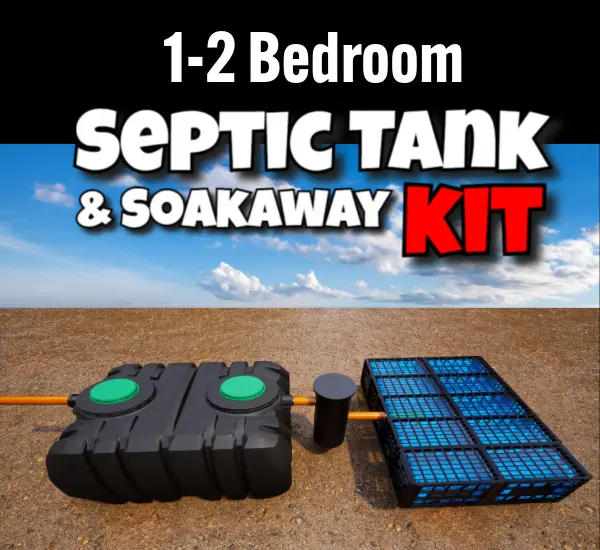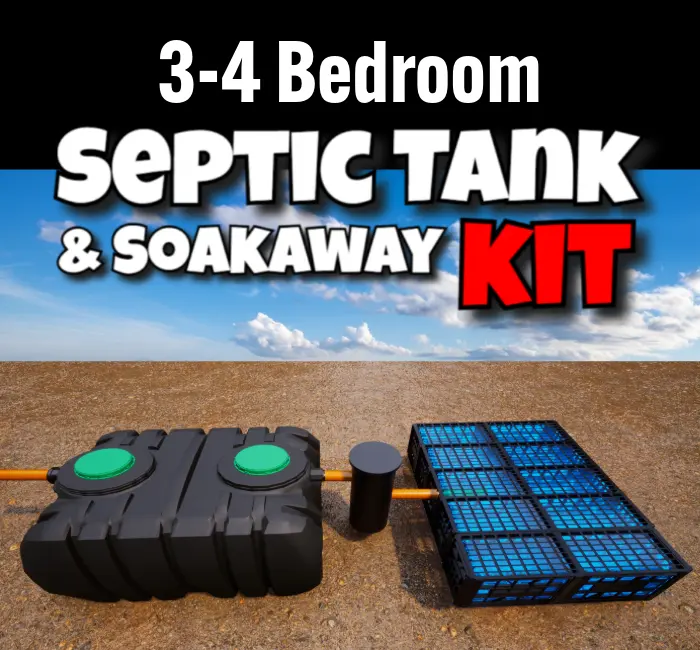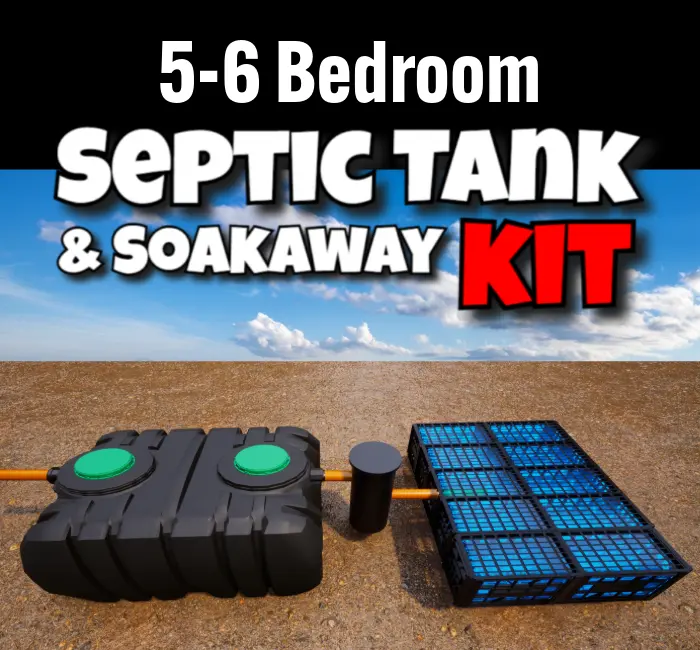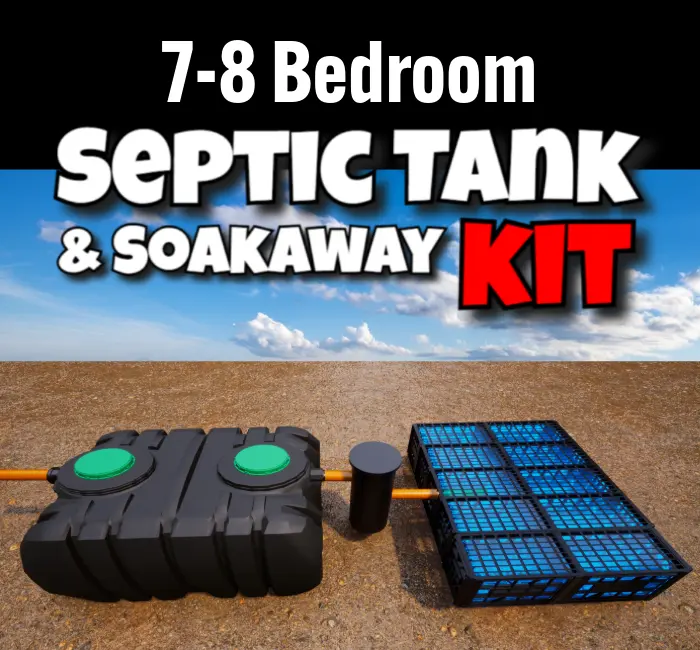White Paper: Addressing Sewage and Nitrate Pollution with Septic Tank Kits
Introduction: The Growing Challenge of Sewage and Nitrate Pollution
In the United Kingdom, where urban and rural landscapes coexist, managing wastewater effectively is a pressing environmental challenge. Sewage pollution, stemming from untreated or poorly treated wastewater, threatens water quality, ecosystems, and public health. Nitrate pollution, a significant component of sewage and agricultural runoff, exacerbates these issues by contaminating drinking water and triggering ecological imbalances. In areas without access to mains drainage, septic tank systems are critical for treating domestic wastewater, yet their design and installation play a pivotal role in mitigating environmental harm.
Nitrate pollution is particularly concerning due to its impact on human health and aquatic ecosystems. High nitrate levels in drinking water are linked to methemoglobinemia, a condition affecting infants, and increased risks of cancers such as colorectal cancer (Clean Wisconsin). Ecologically, nitrates contribute to eutrophication, causing algal blooms that deplete oxygen and harm aquatic life (Aquamonitrix). In the UK, where 27% of surface water samples exceed safe nitrate levels in some regions (MN Dept. of Health), innovative solutions are needed to address these challenges.
This white paper examines the environmental and health impacts of sewage and nitrate pollution, explores the role of septic tank systems in wastewater management, and highlights how cost-effective septic tank kits can reduce nitrate contamination. By comparing different septic tank materials, analyzing the benefits of shallow dig designs, and discussing regulatory compliance, we aim to provide a comprehensive resource for homeowners, businesses, and policymakers seeking sustainable wastewater solutions.
Understanding Sewage and Nitrate Pollution
Sewage pollution arises from the discharge of untreated or inadequately treated human waste into water bodies, including rivers, lakes, and oceans. This pollution introduces a toxic mix of pathogens, nutrients, heavy metals, and pharmaceuticals, disrupting ecosystems and posing health risks (ScienceDirect). Globally, over 80% of wastewater is released untreated, with severe consequences for biodiversity and water security (NRDC).
Nitrate pollution, a subset of sewage-related issues, results from excessive nitrogen inputs from sewage, septic systems, and agricultural fertilizers. Nitrates are highly soluble, easily infiltrating groundwater and surface water, leading to contamination (ScienceDirect). The environmental impacts include:
- Eutrophication: Excess nitrates fuel algal blooms, depleting oxygen and causing fish die-offs (Calcamite).
- Drinking Water Contamination: Nitrate levels above 10 mg/L can cause health issues, including methemoglobinemia and cancers (Clean Wisconsin).
- Ecosystem Damage: Nitrates disrupt aquatic ecosystems, harming species and reducing biodiversity (Natural History Museum).
In the UK, nitrate pollution is a growing concern, particularly in rural areas where septic systems and agricultural runoff contribute to elevated levels in groundwater. Effective wastewater management is essential to mitigate these impacts, and septic tank kits offer a promising solution by providing efficient treatment at a lower cost.
Septic Tanks: A Cornerstone of Wastewater Management
Septic tanks are underground chambers that treat domestic wastewater through a combination of physical separation and anaerobic digestion. Wastewater from households enters the tank, where solids settle to form sludge, oils and grease float as scum, and the liquid effluent is discharged to a drainage field for further treatment by soil bacteria (US EPA). This process reduces the pollutant load, including nitrates, before the effluent re-enters the environment.
Septic tanks are particularly vital in rural areas without mains sewer connections, serving as a primary means of wastewater treatment. However, their effectiveness depends on proper design, installation, and maintenance to prevent leaks or overflows that could exacerbate nitrate pollution.
Types of Septic Tanks
Septic tanks are typically constructed from concrete, plastic (HDPE), or fibreglass, each with distinct advantages and drawbacks. Understanding these materials is crucial for selecting a system that balances cost, durability, and environmental performance.
| Material | Pros | Cons |
|---|---|---|
| Concrete |
– Durable, lasting up to 50 years – Heavy, resists floating in high water tables – Resistant to tree roots and soil shifts |
– Requires heavy machinery for installation – Can crack over time – Higher upfront cost |
| Plastic (HDPE) |
– Lightweight, easy to transport and install – Corrosion-resistant – Cost-effective – Ideal for shallow dig installations |
– Less robust, may need reinforcement – Requires anchoring in high water tables |
| Fibreglass |
– Strong and durable – Corrosion-resistant – Lighter than concrete |
– More expensive than plastic – Can crack if improperly installed – Less widely available |
Plastic septic tanks, like those used in [Builders Yard UK](https://buildersyard.uk/septic-tanks/) kits, are particularly appealing for their affordability and ease of installation, making them suitable for a wide range of properties, including those with challenging soil conditions.
Septic Tank Kits: A Cost-Effective Solution
Septic tank kits provide a comprehensive, user-friendly solution for wastewater management, particularly for properties not connected to mains sewers. These kits include all necessary components for installation, reducing the complexity and cost associated with traditional septic systems. For example, kits from [Builders Yard UK](https://buildersyard.uk/) include:
- A heavy-duty, shallow dig, low-profile septic tank (3000L for 1-2 and 3-4 bedrooms, 4000L for 5-6 and 7-8 bedrooms)
- 5 lengths of 110mm underground pipe
- 110mm connectors
- Drainage field crates (8 for 1-2 bedrooms, 10 for 3-4, 12 for 5-6, 14 for 7-8)
- Free membrane
Priced at £3,499, these kits are significantly more affordable than professional installations, which typically range from £12,000 to £20,000 (Checkatrade). Installation is designed to be straightforward, requiring only 3 hours with a 1.5, 3, or 5-tonne digger, and no concrete or specialized skills are needed, making it accessible for DIY enthusiasts or local builders.
The cost savings are substantial. For example, a professional installation costing £15,000 can be replaced with a kit at £3,499, plus approximately £500 for digger hire and £500 for labour, totaling £4,499—a saving of £10,501. Even at the higher end of professional costs (£20,000), savings can reach £15,501.
Reducing Nitrate Pollution with Septic Tank Kits
Septic tank kits can significantly reduce nitrate pollution by ensuring efficient wastewater treatment and minimizing leaks or overflows. The shallow dig, low-profile design of these tanks allows for installation in areas with high water tables or clay soils, where traditional deep systems may fail to treat effluent adequately. By placing the drainage field at a shallow depth (500mm below the grass), the kits ensure effluent is treated in the more permeable topsoil layers, reducing the risk of untreated nitrates reaching groundwater (Aquamonitrix).
Drainage field crates enhance this process by providing a high-void ratio (over 90%), allowing for efficient effluent dispersal with a smaller footprint compared to gravel-based systems (Drainage Superstore). This efficiency reduces the likelihood of effluent pooling, which can lead to nitrate leaching. However, it’s important to note that some sources suggest standard soakaway crates are unsuitable for sewage effluent due to regulatory restrictions (WTE). The kits from [Builders Yard UK](https://buildersyard.uk/septic-tanks/) use specially designed drainage field crates compliant with BS 6297:2007, ensuring they meet UK standards for sewage treatment.
Advantages of Shallow Dig, Low-Profile Septic Tanks
Shallow dig septic tanks offer several advantages over traditional deep systems, particularly in reducing installation costs and environmental impact:
- Reduced Excavation: Requiring only 1–1.5m depth, these tanks minimize digger hire and labour costs compared to deep systems needing 3m or more (Tanks Direct).
- Suitability for Challenging Soils: Ideal for clay soils or high water tables, where deep excavation encounters denser, less permeable layers.
- Smaller Footprint: The compact design fits postage stamp-sized gardens, reducing land use.
- Faster Installation: The 3-hour installation time reduces disruption and labour expenses.
Traditional “onion” style septic tanks, often made of concrete, require deep excavations and concrete surrounds, increasing costs and installation time. The concrete blanket can take days to dry, further delaying the process and adding to expenses (Southport Concrete Co).
Regulatory Compliance and Environmental Responsibility
In the UK, septic tank installations must adhere to the General Binding Rules set by the Environment Agency to prevent environmental pollution (GOV.UK). These rules require that septic tanks discharge to a drainage field, not directly to watercourses, and meet standards such as BS 6297:2007 for drainage fields. Non-compliance can result in fines up to £100,000, making regulatory adherence critical (Chartsedge).
The septic tank kits from [Builders Yard UK](https://buildersyard.uk/septic-tanks/) are designed to comply with these regulations, incorporating approved drainage field crates and tanks certified to EN 12566-1 standards. Homeowners must also obtain planning permission and building regulations approval from their local authority to ensure compliance, particularly in protected zones.
Comparing Septic Tank Kits to Sewage Treatment Plants
Sewage treatment plants offer advanced treatment, allowing discharge to watercourses, but they come with higher costs and maintenance requirements. Installation costs can exceed £10,000, and annual electricity costs for a 6-person plant can reach £127, with larger systems costing up to £457 (Direct Drainage). Servicing, required annually, can cost around £750, and moving parts like motors and gears may need costly repairs (Tricel).
Septic tank kits, in contrast, have no electricity costs and minimal maintenance, primarily requiring desludging every 1-3 years. Their simplicity and lower upfront cost make them a more economical choice for many properties, especially those with suitable drainage fields.
| Feature | Septic Tank Kit | Sewage Treatment Plant |
|---|---|---|
| Initial Cost | £3,499 | £10,000+ |
| Electricity Cost | £0 | £127–£457/year |
| Maintenance | Desludging every 1-3 years | Annual servicing (~£750) |
| Discharge | Drainage field | Watercourse or drainage field |
Attenuation Crates: Enhancing Stormwater Management
Attenuation crates are modular plastic units designed to store and slowly release stormwater, preventing flooding and reducing strain on sewer systems (GRAF UK). They are a key component of Sustainable Drainage Systems (SuDS), promoting groundwater recharge and minimizing runoff pollution. [Builders Yard UK](https://buildersyard.uk/) offers attenuation crates in sizes from 4 pop to 100 pop, suitable for domestic and commercial properties.
By integrating attenuation crates with septic tank systems, property owners can manage both wastewater and stormwater effectively, reducing the risk of flooding and nitrate leaching during heavy rainfall. These crates are particularly valuable in areas prone to flooding or with impermeable soils.
Case Studies: Real-World Applications
While specific case studies are not available, consider a hypothetical scenario: a rural homeowner in Yorkshire with a 3-bedroom property faces frequent flooding and poor soil drainage. By installing a [Builders Yard UK](https://buildersyard.uk/septic-tanks/) 3-4 bedroom septic tank kit with 10 drainage field crates and complementary attenuation crates, they achieve efficient wastewater treatment and stormwater management. The shallow dig design reduces installation costs, and the system complies with Environment Agency regulations, preventing nitrate pollution and protecting local water sources.
Another scenario involves a glamping site in Cornwall, where space is limited. The compact footprint of the 1-2 bedroom kit with 8 drainage field crates allows for effective sewage treatment without compromising the site’s aesthetic or environmental integrity.
FAQs
What is included in the septic tank kit?
The kit includes a heavy-duty, shallow dig, low-profile septic tank, 5 lengths of 110mm underground pipe, 110mm connectors, drainage field crates (8–14 depending on kit size), and a free membrane.
How long does installation take?
Installation typically takes 3 hours using a 1.5, 3, or 5-tonne digger.
Do I need special equipment or experience?
No special experience is required. A small digger is sufficient, and the kit is designed for DIY or local builder installation.
Is the kit compliant with UK regulations?
Yes, it meets UK Building Control, Environment Agency, and General Binding Rules standards.
Can I install it myself?
Yes, but hiring a local builder can ensure proper installation, especially for inexperienced users.
How does it work in clay soil or high water tables?
The shallow dig design and drainage field crates ensure effective drainage in clay soils and high water table areas.
What maintenance is required?
Desludging every 1-3 years and periodic drainage field inspections are recommended.
How much can I save compared to professional installation?
Savings range from £8,000 to £15,501, with total kit costs around £4,499 including hire and labour.
What sizes are available?
Kits are available for 1-2, 3-4, 5-6, and 7-8 bedrooms, with tank capacities of 3000L or 4000L.
What are attenuation crates, and do I need them?
Attenuation crates manage stormwater to prevent flooding. They’re beneficial in flood-prone areas or with limited drainage capacity.
Conclusion
Sewage and nitrate pollution are pressing environmental challenges that demand effective wastewater management solutions. Septic tank kits, such as those from [Builders Yard UK](https://buildersyard.uk/), offer a cost-effective, compliant, and environmentally responsible option for properties without mains drainage. By leveraging shallow dig designs and drainage field crates, these kits reduce nitrate pollution, save thousands in installation costs, and ensure long-term reliability. For homeowners, businesses, and communities seeking sustainable wastewater solutions, septic tank kits represent a practical step toward a cleaner, healthier environment.




